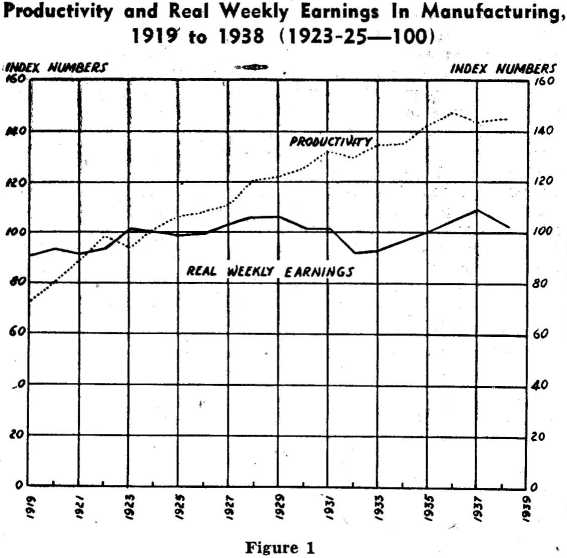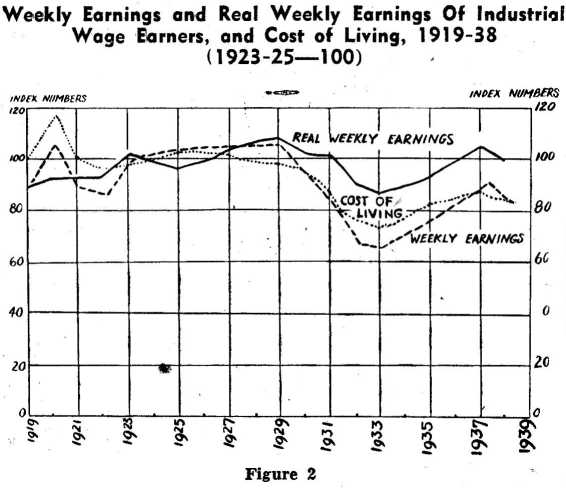
Main NI Index | Main Newspaper Index
Encyclopedia of Trotskyism | Marxists’ Internet Archive
From The Militant, Vol. X No. 30, 27 July 1946, p. 6.
Transcribed & marked up by Einde O’Callaghan for ETOL.
We have seen that prices are not controlled by the employer’s free choice, nor are prices directly controlled by wages. As proof of this, we saw that during the war prices went up much more than wages. So the employers’ margin between wage costs and prices became even bigger. In spite of this generous margin the capitalists raise prices still more.
What about the margin before the war? The chart Figure 1 shows how much the workers got in wages, for all industrial workers in the United States, from 1919 to 1938. It is taken from page 17 of the report on Productivity, Wages and National Income, by the Brookings Institute, a conservative capitalist statistical source.
In Figure 1 the index line 100 stands for the average level. The line of dashes shows changes in weekly money wages, which went up in booms and down in depressions as we might expect. The dotted line shows how the cost of living went up and down at about the same times.
The solid line shows real weekly earnings. This means real wages, wages measured by what they will buy in food, clothing, etc., when money wages changed, real wages changed less, because the cost of living also was changing. In the main, there was very little change in the amount of real goods that a worker got for a week’s work.

|
During this same time, what about the workers’ output? Figure 2 is drawn by combining two charts, both on page 53 of the same Brookings report. It compares real weekly earnings with productivity. Between 1919 and 1938, as efficiency increased, the productivity of the average worker doubled, productivity went from an index of 72 to 144. By 1938 the average worker in industry was turning out twice as much in actual goods as in 1919; but he was getting no more in actual goods.
The difference between what the worker produces and what the worker gets is the employer’s margin. Plainly, the capitalists were getting plenty of margin before the war started. They made their margin bigger during the war. They are swelling their margin even more by price increases since the war.

|
Over the years, increases in productivity have not brought higher wages for workers. Increased productivity has only given an increased margin for the employers.
Next week: The Working Class Method in Economics.
Main Militant Index | Main Newspaper Index
Encyclopedia of Trotskyism | Marxists’ Internet Archive
Last updated on 26 June 2021